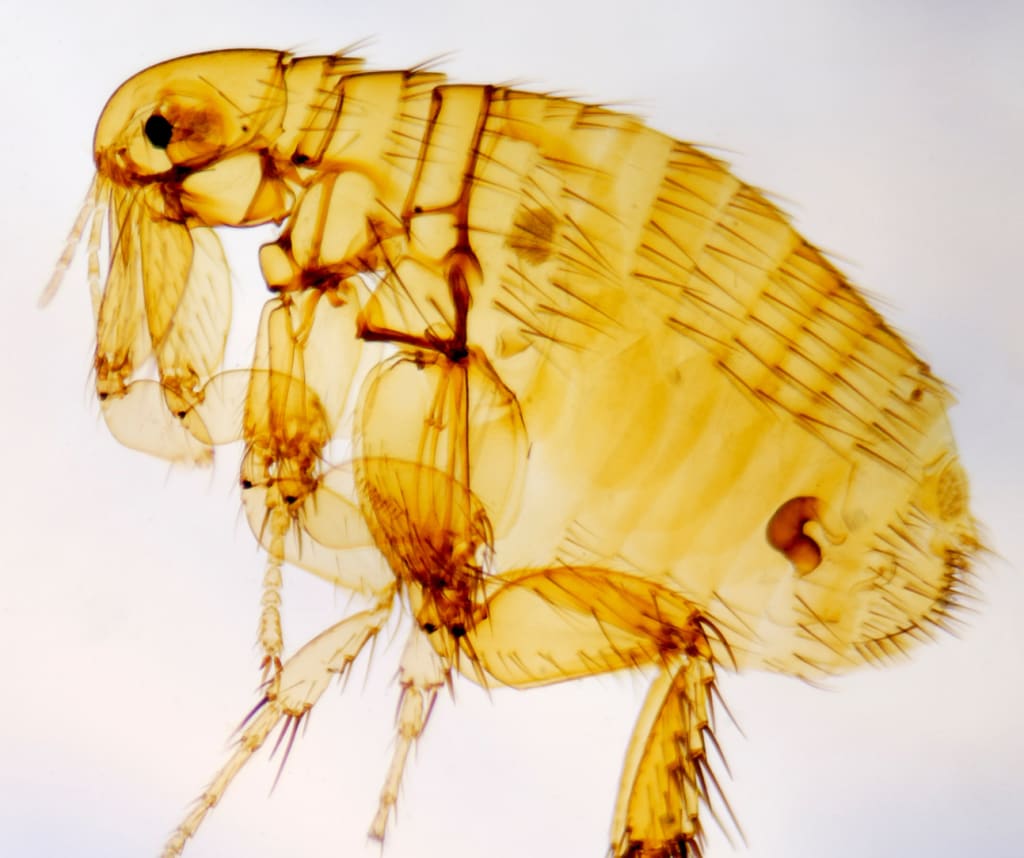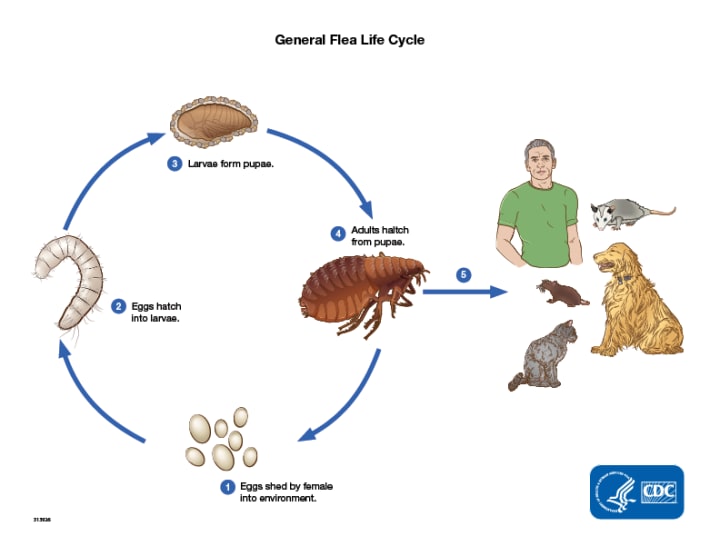Facts About Fleas
That you may or may not want to know about!

What are fleas?
Fleas are small insects that can be quite pesky to humans and their beloved pets. They survive by feeding on blood, and they don't care whether it belongs to a human or a pet.
Once bitten, both humans and pets can feel discomfort and itchiness. The area often gets irritated. Fleas can also carry disease when they travel from one feeding to another!
Why are fleas such a problem?
Fleas can become a problem very quickly, and it can take a long time for you to get rid of them once they are.
This is because each female flea can lay up to forty eggs a day, which can quickly lead to an infestation of fleas. Even worse, by the time you see a single adult flea, you already have an infestation in your home!

This is because only five percent of fleas are adults, which can live up to one hundred days. Ten percent of fleas are the pupae, which can live one hundred and seventy-four days before they turn into adults. Thirty-five percent of fleas are in the larvae stage. It takes five to eleven days for them to become pupae. This means that fifty percent of all fleas (which you will never see) are eggs, which can hatch in one to ten days.
This means, that for every adult that you do see, there are plenty of pupae, larvae, and eggs which you can’t see!
Even worse, fleas can live and thrive almost anywhere! They can live in the city and the country. They live on wooden floors, as well as the carpet. They are outside in shrubs.
That being said, they thrive best in warm and dark places. Because of this, carpets, furniture, and bedding are the best environment for fleas to mature and grow.
What can fleas do to your dogs and cats?
Though most people think that fleas are just a nuisance like other bugs, the truth is that they do feed on blood, which can be quite harmful to our beloved pets!
At the very least, they can cause some discomfort. Many pets get tapeworms from fleas. If the infestation on your dog or cat is really bad, he or she may be dealing with anemia due to the loss of blood. This can lead to some serious health problems if it is not taken care of!
Then, there are the pets that are allergic to fleas. For those who suffer from flea allergy dermatitis, one single flea can cause a terrible reaction. These pets can't stop licking, biting, and scratching. They can even cause plenty of damage to their skin because of this. They may end up bald in the back end, with lots of scrapes and scabs as they do more damage to themselves due to the itchiness.
What can you do once you have fleas in your home?
Once you have found adult fleas in your home, you must treat it as an infestation. In fact, you need to realize that you aren't going to treat once and be done. Due to the length of the life cycle of fleas, you are going to have to continue to treat for several months to get rid of every last one!
The first thing that you need to do is thoroughly clean your home, paying attention to the areas where fleas love to be! This means that you are going to have to wash all of your pet's bedding, as well as your own. Any rugs that you own should get washed, too.
You also need to vacuum your home and do your best to get in the dark spaces, like under the couch and other furniture. Move as much furniture as you can to try to vacuum up as many fleas as you can. Many people recommend putting a flea collar in the bag of the vacuum to kill the ones that you pick up when you're vacuuming.
You also need to treat every pet in your home. Your veterinarian may have several suggestions for good flea prevention that you may want to use. If you don't have a veterinarian that you use regularly, you may want to order a Seresto collar. These collars are good for eight months of flea and tick prevention, without a prescription!
You also need to treat your home. Though the best way to do this is by hiring a professional, you can also treat your home and yard yourself. You may need to bomb your home or use a spray regularly until you have gotten rid of all of the life stages of the flea.
However, you can't just do it once and be done! Follow-up is so important. You are going to have to do thorough cleaning throughout the treatments, vacuuming well, and washing bedding often. You may have to treat your home regularly, and you should make sure that your pets are all on good flea and tick prevention for several months.
How can you prevent fleas?
Since it can be quite complicated to get rid of fleas, it is much better to do what you can to prevent them. No matter where you live, you should keep your pets on a good preventative all year round. Though many people stop in the fall, they are usually worse during this time, as they prepare for winter. Fleas are desperate to find a good home that is warm (like your dog or cat) and will latch on so that he or she can make it through the winter.
***
Please note, this article contains affiliate links where I will receive compensation if you buy the product, without any extra cost to you.
***
Previously published on Medium and/or Newsbreak.
About the Creator
Shelley Wenger
Small town country girl in southern Pennsylvania. Raising two boys on a small farm filled with horses, goats, chickens, rabbits, ducks, dogs, and a cat. Certified veterinary technician and writer at Virtually Shelley.






Comments (1)
I never knew! Great work!